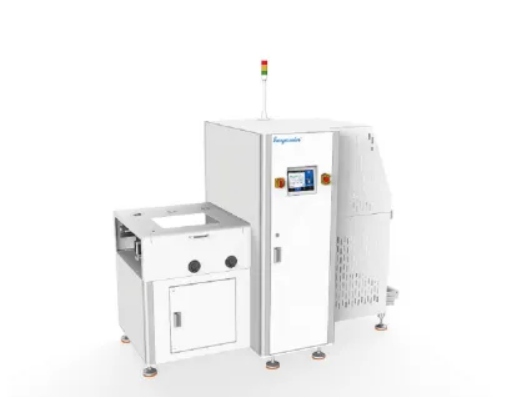SMT Machine: Types and Features of Excellent SMT Machines
Surface mount technology (SMT) is the process wherein components are mounted onto the surface of a printed circuit board. The components are designed specifically to be directly mounted, rather than hardwired, onto the circuit board for the vast majority of electronics.
What is SMT?
Surface mount technology (SMT) is the process wherein components are mounted onto the surface of a printed circuit board. The components are designed specifically to be directly mounted, rather than hardwired, onto the circuit board for the vast majority of electronics.
A faces painted machine represents the latest generation of high-tech equipment assisting PCB manufacturers in resolving SMT assembly challenges. These machines streamline SMT assembly processes by employing fewer components, improving performance, and mitigating lead resistance and inductance issues.
This article will explore the various types and features of an effective SMT machine.
What do SMT machines do?
SMT machines are employed in the manufacturing of surface mount printed circuit boards (SMT PCBs). They encompass soldering equipment, component placement machines, and ovens.
These machines enable PCB companies to incorporate additional features onto smaller boards without relying on through-hole wire leads for component connections. Additionally, SMT equipment facilitates the printing and placement of elements on both sides of a PCB.

Types of SMT Machines
The process of placing electrical components on a PCB involves up to 6 different machines. Consequently, the input from all these machines collectively determines the output of an SMT machine.
Below is a breakdown of the various types of SMT machines:
-Pick-and-place machines:
These machines come in various types, including:
- Manual pick-and-place machines:
This is the most widely used and cost-effective SMT machine for modular PCB assembly. An SMT operator performs the picking and placement procedure manually on this machine. Overall, it's an excellent choice for unsupervised high-speed operations.
- Semi-automatic pick-and-place machines:
Unlike the manual version, this type features advanced computer interface technology and vision assistance, making the operator's job easier.
- Automated picking and placement:
Fully automated pick-and-place machines incorporate picking and placement centering methods to enhance SMT productivity.
- SMT Curing Oven:
The curing oven is responsible for curing adhesive and baking solder paste. The baking process depends on the production volume of the machine.
- Screen Printer for Solder Paste:
The screen printing machine applies solder paste onto the PCB through screen printing. Typically, this process occurs prior to the assembly process by an SMT Machine Operator.
- Reflow Soldering Machine:
This machine facilitates the flow of solder from surface mount devices (SMD) to the Printed Circuit Board (PCB).
- Solvent Cleaning Equipment:
After soldering, there may be excess solder or flux residue. Solvent cleaning equipment is used to remove these residues.
- Inspection Equipment:
This machine detects and addresses any flaws found on the PCB during the inspection process.
SMT Feeder:
Improvements in feeder technology generally impact PCB assembly capabilities and production volume. SMT feeders are available in various shapes and sizes, depending on the packaging used for different mount components. For example:
Tape Feeder:
Tape feeders feature advanced capabilities, making them suitable for high-precision placement machines.
Tray Feeder:
Tray feeders are available in single-layer and multi-layer structures.
Stick Feeder:
Stick feeders and vibration feeders assist in loading components into the mounter.
Tube Feeder:
Tube feeders ensure accurate entry of all components into the placement head.
How to Choose the Best SMT Machine?
Before selecting an SMT machine, several factors should be taken into consideration:
-
Part Size:
The size of the electronic components you intend to place plays a crucial role. Ensure that the machine's size matches the size of the components.
-
Machine Accuracy:
Accuracy is a key factor in choosing an SMT machine. Look for machines with a standard accuracy of 0.0001" in Surface Mount Technology.
-
Machine Repeatability:
In addition to accuracy, repeatability is essential for consistent performance. Opt for machines with programmed software solutions that ensure maximum output.
-
Placement Speed:
Consider the speed at which the machine picks up, checks, and installs electronic components. Look for machines that meet the IPC9850 standard for rapid placement.
-
Prices and Cost:
Choose a high-speed pick-and-place machine that offers features corresponding to its price. Ensure that the machine's capabilities align with your budget and requirements.
Summary:
SMT machines streamline work processes, reduce expenses, and boost production capacity. Before purchasing an SMT machine, it's essential to understand its operation, the various types available, programming procedures, and its key qualities.
We trust that our article has been helpful. If you have any further inquiries or wish to delve deeper into the topic of SMT machines, please don't hesitate to reach out to us. Our team is dedicated to addressing any questions you may have.
